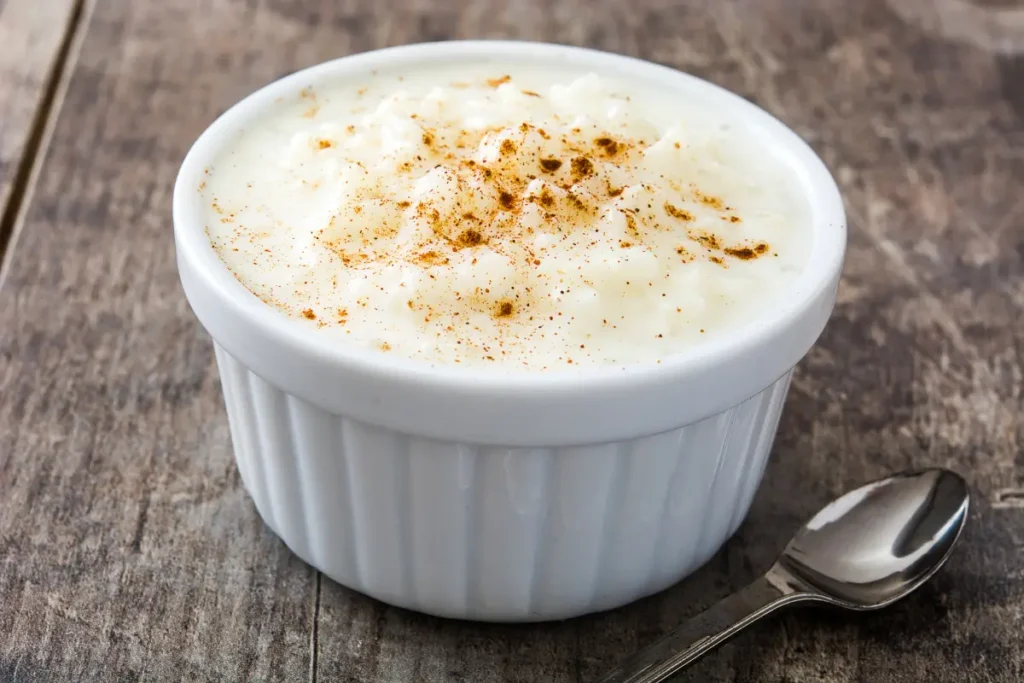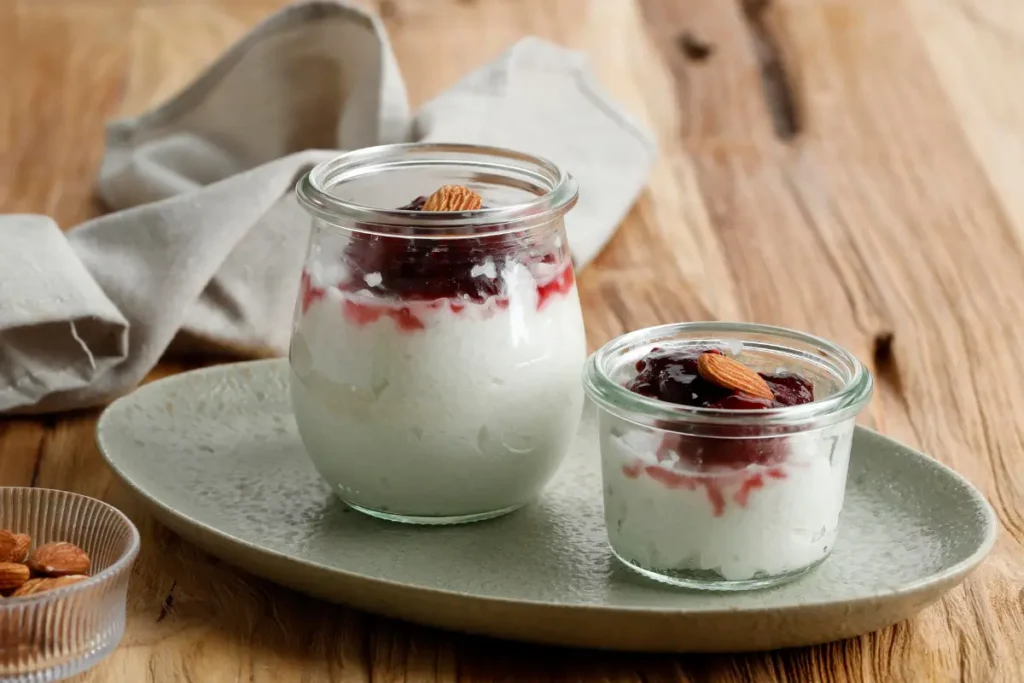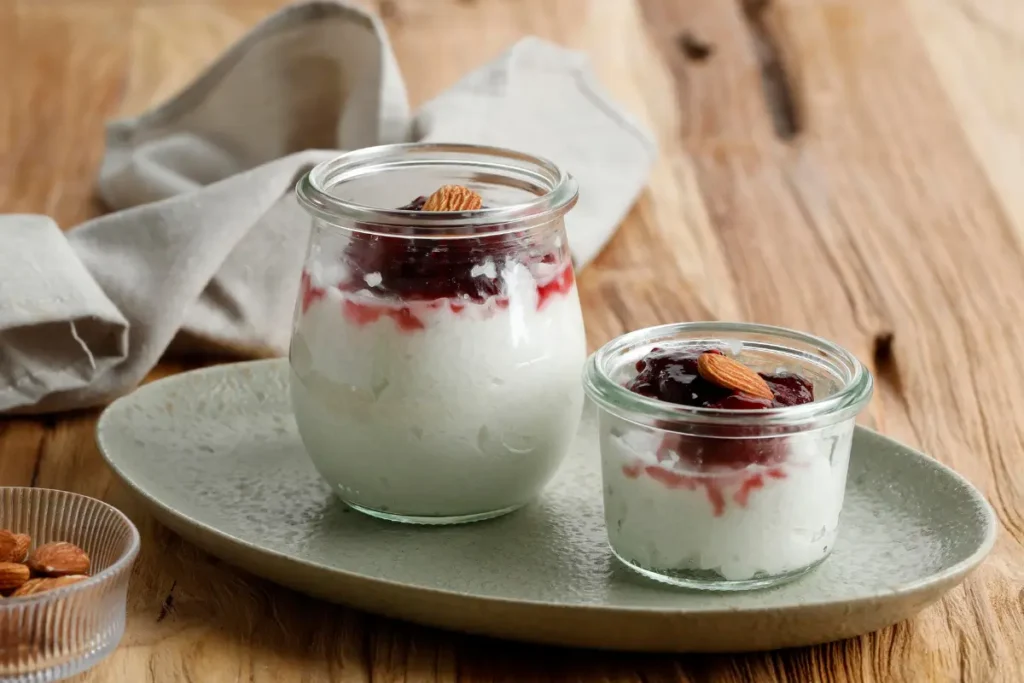
Introduction to Rice Pudding Recipe
Rice pudding is more than just a dessert; it’s a bridge to our past, a simple pleasure that has stood the test of time. The perfect rice pudding recipe whispers tales of home, comfort, and simplicity. It’s a dish that requires patience and care, transforming humble ingredients into a sumptuous treat. Whether you’re a seasoned chef or a curious novice, the journey to the perfect rice pudding starts with understanding its essence.
The History of Rice Pudding
Rice pudding’s journey is as rich and varied as the cultures that cherish it. From the kheer of India, perfumed with cardamom and saffron, to the arroz con leche of Spain, zested with citrus and cinnamon, rice pudding has donned many cloaks. It’s a testament to the dish’s versatility and universal appeal. Understanding its history is not just about tracing the origins of a recipe; it’s about appreciating the shared human experience that food represents.
Why This Rice Pudding Recipe Works
What sets this rice pudding recipe apart? It’s all in the details. This recipe is a culmination of generations of trial and error, a balance of texture, flavor, and simplicity. Unlike the quick, often overly sweet versions, this recipe honors the slow simmer, allowing the rice to plump up perfectly, absorbing the milk and spices, resulting in a pudding that’s creamy, not mushy. It’s a recipe that respects tradition while embracing the individual tastes of those who make it.

Classic Creamy Rice Pudding Recipe
Ingredients:
- 1 cup Arborio rice (or any short-grain white rice)
- 4 cups whole milk
- 1/2 cup granulated sugar
- 1 vanilla bean, split lengthwise (or 2 teaspoons vanilla extract)
- A pinch of salt
- Ground cinnamon, for garnish
- Optional: 1/2 cup raisins
Instructions:
- Prepare the Rice: Rinse the Arborio rice under cold water until the water runs clear. This removes excess starch and prevents the pudding from becoming too thick.
- Combine Ingredients: In a large, heavy-bottomed saucepan, combine the rinsed rice, whole milk, granulated sugar, and a pinch of salt. Scrape the seeds from the vanilla bean into the pot and add the bean pod as well (or add vanilla extract if using).
- Cook the Pudding: Place the saucepan over medium heat and bring the mixture to a gentle simmer, stirring frequently to prevent the rice from sticking to the bottom of the pan.
- Simmer: Once the mixture reaches a simmer, reduce the heat to low. Continue to cook, stirring occasionally, for about 25-30 minutes, or until the rice is tender and the mixture has thickened to your desired consistency. If using, add the raisins in the last 10 minutes of cooking.
- Finish and Serve: Remove the vanilla bean pod (if used) and pour the rice pudding into a serving dish or individual bowls. Allow to cool slightly before serving warm, or chill in the refrigerator to serve cold. Garnish with a sprinkle of ground cinnamon before serving.
Nutrition Information (per serving, based on 6 servings):
- Calories: 260 kcal
- Protein: 6 g
- Carbohydrates: 50 g
- Fat: 4 g (Saturated Fat: 2 g)
- Cholesterol: 20 mg
- Sodium: 85 mg
- Fiber: 1 g
- Sugar: 25 g
Note: Nutritional values are approximate and may vary based on specific ingredients used.
Chef’s Advice:
- Rice Choice: Arborio rice is ideal for pudding due to its high starch content, which contributes to the creamy texture. However, experimenting with different types of rice can yield interesting textures and flavors.
- Stirring: While it’s important to stir the pudding occasionally to prevent sticking, avoid over-stirring once the rice begins to soften, as this can break the grains and make the pudding too thick.
- Flavoring: Infusing the milk with a vanilla bean adds a rich, aromatic flavor that’s hard to beat. For an extra layer of taste, consider adding a cinnamon stick or cardamom pods during the cooking process.
- Consistency: The pudding will thicken as it cools, so remove it from the heat when it’s slightly looser than you want the final product to be.
- Serving: Rice pudding can be enjoyed both warm and cold. For a warm, comforting treat, serve immediately. For a refreshing dessert, chill in the refrigerator for at least 2 hours.

This classic rice pudding recipe is a testament to the comfort and simplicity that traditional desserts can bring to the table. Enjoy crafting this timeless treat and indulging in its creamy, comforting goodness
For those looking to pair this dessert with a delightful snack, consider exploring a comprehensive guide to baking mini chocolate chip cookies, perfect for dipping into your rice pudding.
Advanced Tips for Perfect Rice Pudding Every Time
Achieving the perfect rice pudding is a dance of precision and intuition. Here are some pro tips to ensure your pudding is a hit every time:
- Rice Selection: The type of rice you use can dramatically affect the texture. Arborio rice, typically used in risotto, offers a creamier texture due to its high starch content.
- Milk Matters: For an ultra-creamy texture, don’t skimp on the fat. Whole milk is ideal, but for a lighter version, a mix of milk and water can work wonders.
- Stirring Strategy: Resist the urge to stir constantly. Occasional stirring is enough to prevent sticking and encourage even cooking.
- Sweetness: Adjust the sugar to your liking, but remember, the flavors will intensify as the pudding cools.
- Spice it Up: Don’t be afraid to experiment with spices. Cardamom, nutmeg, or a dash of rose water can add an exotic twist to your pudding.
Variations of Rice Pudding Recipe
Rice pudding is a global delight, with each culture adding its unique spin. Here are some variations to inspire your culinary creativity:
- Dairy-Free Delight: Substitute almond or coconut milk for a vegan-friendly version. Add coconut cream for extra richness.
- Chocolate Rice Pudding: Stir in some cocoa powder or melted chocolate for a decadent twist.
- Fruit-Infused: Mix in diced apples, pears, or mangoes during the cooking process for a burst of freshness.
- Savory Spin: Yes, rice pudding can be savory! Reduce the sugar, add shredded chicken, and spices like turmeric and cumin for a comforting meal.
FAQs
In the spirit of sharing knowledge, let’s tackle some frequently asked questions about rice pudding:
What type of rice is best for rice pudding?
The best type of rice for rice pudding is one that is starchy enough to become creamy without disintegrating during the cooking process. Long-grain white rice, such as Basmati or Jasmine, is often recommended for its ability to maintain a slight chewiness. Arborio rice, commonly used in risotto, is another excellent choice due to its high starch content, which contributes to a creamier texture. Ultimately, the choice of rice can vary based on personal preference and the specific texture you’re aiming for in your rice pudding.
How does Gordon Ramsay make rice pudding?
Gordon Ramsay’s approach to rice pudding emphasizes simplicity, quality ingredients, and technique to achieve a comforting, rich dessert. While specific recipes may vary, Ramsay typically uses Arborio rice for its creamy texture, combining it with whole milk, sugar, and a vanilla pod to infuse flavor. He often suggests baking the pudding in a low oven, allowing the rice to slowly absorb the liquid and flavors, resulting in a velvety, indulgent dessert. Ramsay may also recommend finishing the pudding with a sprinkle of sugar and briefly broiling it to create a caramelized top.
How to make Jamie Oliver’s rice pudding?

Jamie Oliver’s rice pudding recipes are known for their rustic charm and straightforwardness, often incorporating fresh, wholesome ingredients. In his versions, Jamie might use short-grain rice, like Arborio, simmered slowly in milk with natural sweeteners like honey or maple syrup. He often adds a twist with orange or lemon zest, a cinnamon stick, and sometimes a split vanilla pod for depth of flavor. Jamie’s method usually involves combining the ingredients in a pot and simmering gently until the rice is tender and the mixture has thickened, occasionally suggesting to finish the pudding in the oven for a slightly firmer texture.
What is traditional rice pudding made of?
Traditional rice pudding is a simple, hearty dessert made from a few basic ingredients: rice, milk (or a combination of milk and water), sugar, and a flavoring agent such as vanilla or cinnamon. The rice is slowly cooked in the milk until it becomes soft and the mixture thickens. Traditional recipes may vary slightly by region, with some adding raisins, nutmeg, or lemon zest for additional flavor. In many cultures, eggs are whisked into the milk to create a custard-like consistency, enriching the pudding further. The beauty of traditional rice pudding lies in its simplicity and the comforting, creamy texture that can be achieved with such humble ingredients.
Serving and Presentation Ideas
Presentation is half the pleasure of eating. Here are some ideas to make your rice pudding not just a dessert, but a feast for the eyes:
- Cinnamon and Nutmeg: A light dusting of these spices adds warmth and elegance.
- Fruit Compote: A side of berry compote or caramelized apples can elevate your pudding to gourmet status.
- Layered Dessert: Layer your rice pudding with fruit, nuts, and whipped cream in a clear glass for a visually stunning treat.
In crafting this comprehensive guide to the perfect rice pudding recipe, we’ve journeyed through history, navigated the nuances of ingredient selection, and explored the vast landscape of variations. Remember, the best dishes are made with love and a dash of creativity. Whether you stick to the traditional path or venture into new culinary territories, the goal is to enjoy every spoonful of your creation.
For those seeking further inspiration, consider exploring the world of classic rice pudding recipes or dive into the health benefits of rice at Healthline.
As we conclude this guide, remember that cooking is a journey, not a destination. Each batch of rice pudding is an opportunity to refine your skills, experiment with flavors, and, most importantly, share the joy of homemade dessert with those you love. Happy cooking!
